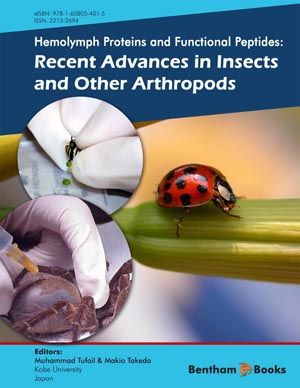Abstract
Insulin was discovered as a key regulator of blood sugar level in 1922. In invertebrates, an insulin-like peptide, now named as bombyxin, was first isolated from the silkworm, Bombyx mori, with its prothoracicotropic activity to the saturniid moth, Samia cynthia ricini, in 1984. After the isolation of the peptide, homologous peptides were found in multiple insect and crustacean species. The insulin signaling pathway has also been recognized as a widely conserved pathway among animals. The conservations of molecular structure and signal pathway indicate that insulin has been one of the most important hormones discovered thus far. In this review, we summarize the molecular aspects of insulin and insulin-like (-related) peptides and then focus on their physiological functions in respect of sugar and lipid metabolisms, hormone biosynthesis, and developmental control such as body size and lifespan. We will make it clear that insulin and insulin-like peptide of arthropods are not just the hormones that regulate blood sugar levels but the strategic key hormones of growth and development. The functions of insulin and insulin-like peptide have been evaluated for hypotrehalosemic and hypoglycemic activities, ecdysteroidogenesis, juvenile hormone synthesis and secretion, lipid metabolism. In addition, they have been now recognized as main regulators of growth, lifespan, and reproduction.
Keywords: Insulin, bombyxin, IGF, brain, sugar metabolism, lipid metabolism, ecdysteroid, juvenile hormone, body size, lifespan, insulin signal.






















